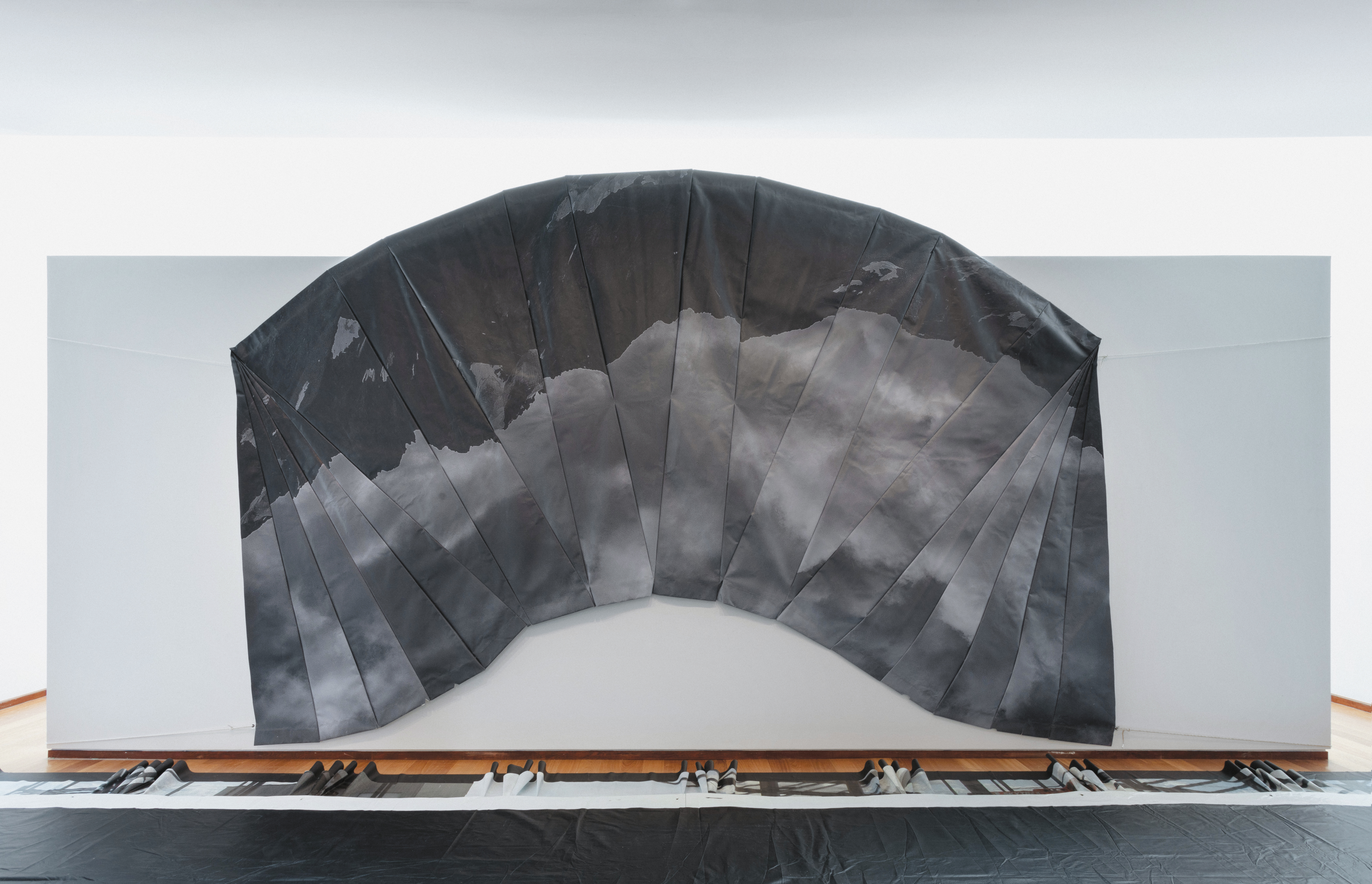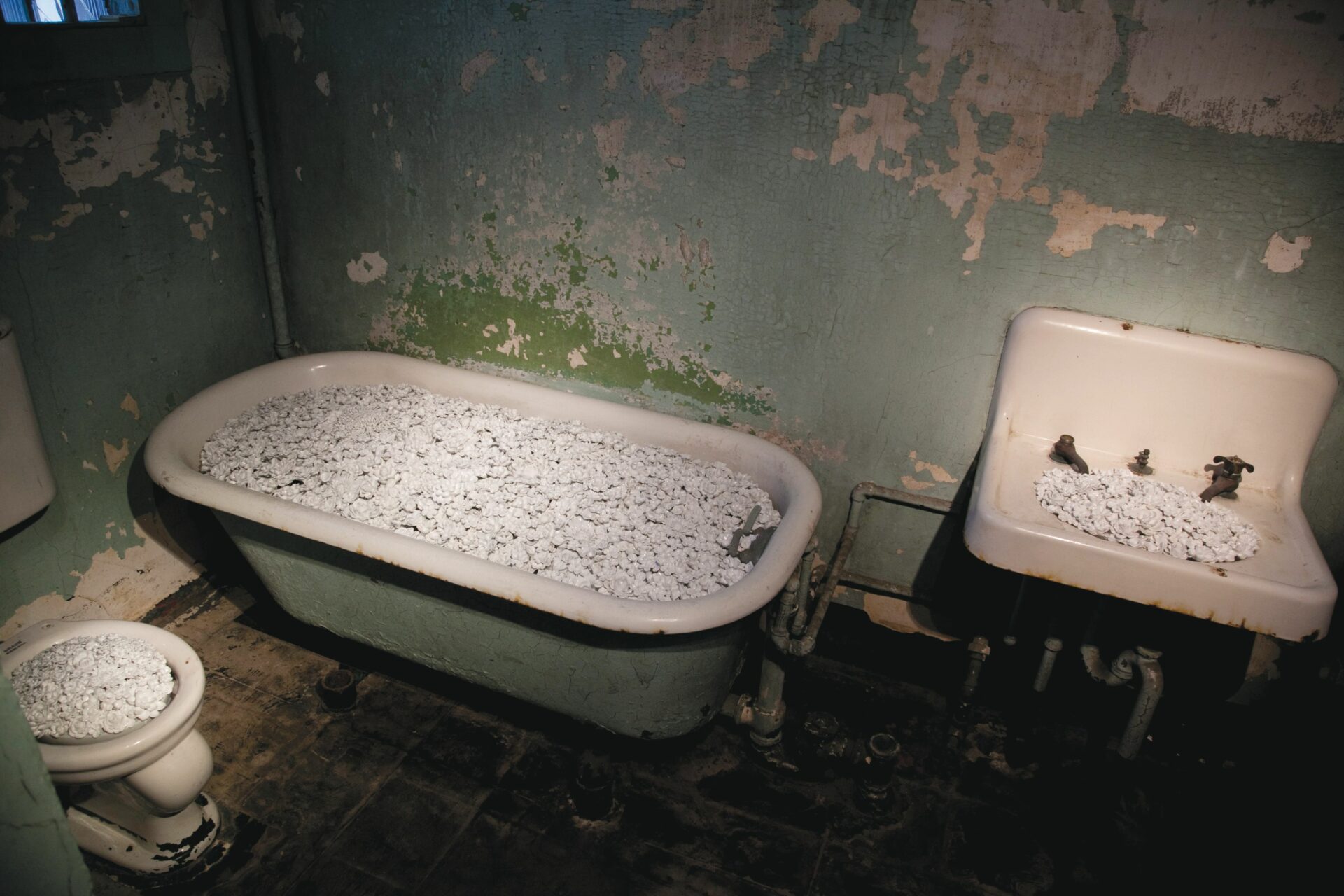
Photo: Laura Findlay, courtesy of the artist
Hyperintimate: A Resistant Coexistence in the Anthropocene
One of the most striking examples of Morton’s hyperobjects is plastic: its perpetual accumulation in the biosphere, alongside its resistance to metabolization, embodies their sprawling, pervasive nature. Having the potential to enter the fossil record,1 1 - Patricia L. Corocan, Charles J. Moore, and Kelly Jazvac, “An Anthropogenic Marker Horizon in the Future Rock Record,” GSA Today 24, no. 6 (2014): 4. plastic is an all-encompassing presence that saturates the planet: it dominates landfills, is found at the bottom of oceans, and infiltrates our cells in minute forms as nanoplastics. This unrelenting state of over–saturation exposes the failure of the redemption mindset, which assumes that human intervention—through recycling, reducing, and repurposing—can remedy the problem even as it neglects the far-reaching contamination parameters of plastics that surpass our capacity to mitigate or contain. As the philosopher Heather Davis notes, such stratagems fall short of addressing plastic’s “accumulation without metabolism”; hence, the issue remains unabated.2 2 - Heather Davis, “Plastic: Accumulation without Metabolism,” in Placing the Golden Spike: Landscapes of the Anthropocene, eds. Dehlia Hannah and Sara Krajewski (Milwaukee: INOVA, 2015), 71. We find ourselves continuously enmeshed in various hyper-objects that shape and exceed the parameters of our control through their cumulative effects that ripple across generations with no geographical boundaries. According to Morton in their book Dark Ecology: For a Logic of Future Coexistence, the Anthropocene thus demands a rethinking of our coexistence as the distinction between human and non-human continues to dissolve.3 3 - Timothy Morton, Dark Ecology: For a Logic of Future Coexistence (New York: Columbia University Press, 2016), 69. See also Derrick Harris, review of Dark Ecology: For a Logic of Future Coexistence by Timothy Morton, Environmental Philosophy 2 (Fall 2016): 304. As these conceptual categories become increasingly difficult to discern, Morton argues that art, too, must be rethought through the framework of intermeshing. They assert, “Art now can only be an uneasy collaboration between humans and nonhumans, not a purely human exploration of access to nonhumans, or the lack thereof,”4 4 - Timothy Morton, “Poisoned Ground: Art and Philosophy in the Time of Hyperobjects,” symploke 21, no. 1–2 (2013): 50. and stress that contemporary art must reckon with the other-than-human as not a distant or inaccessible realm but a co-constitutive force, reflecting the intricate and often uneasy interrelations that configure the Anthropocene.




